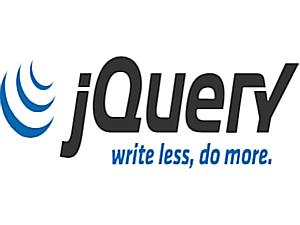
Let selectedIndex = document.getElementById("TagList").selectedIndex ĭocument.getElementById("TagList").options = null Let newOption = new Option(tagEntry.value) ĭocument.getElementById("TagList").options = newOption Var tagEntry = document.getElementById("TagEntry") get a reference to the tagentry input element
#JQUERY POST TO A PAGE AND THEN GO TO IT FULL#
The Jquery code is contained in a seperate file to the create post file.Įdit: I added the full file and took out the codebyte block as they are not working. Is anyone able to tell me why this is? Thank you. So the tagvalues are not being passed to the post. The function does not trigger when the submit button is clicked either. The problem is that the function is triggering when the page is loaded instead of when the submit button is clicked. I want to send the items added to the select box to the post action when the user clicks the “submit” button. Since joining the Career Karma team in November 2020, Ryan has used his expertise to cover topics like React and Ruby on Rails.I have a element in a c# file in an mvc project I am building.

Ryan is currently pursuing further education in web development, aiming to graduate from Flatiron School with a certification in full stack web development. The Texas native earned his Bachelor's of Music Composition from the University of North Texas. What's Next?Ībout the author: Ryan is a technical writer at Career Karma, where he covers programming languages, technology, and web development. Stay calm and debug!Ībout us: Career Karma is a platform designed to help job seekers find, research, and connect with job training programs to advance their careers. ! If you’re at this stage of building your own app, remember that errors happen. Take a moment to congratulate yourself on tackling the complex process of It’s now up to you on how you display the data to your user. Method on our posting variable, and now we have access to the data the server responded back with. After we store the serialized data into a variable, often called values, we can send these values to our destination URL using Keyword to refer to all the data in the form and Is called on the form itself, we can use the JavaScript We’ve covered a lot of ground here! Before we celebrate learning about post(), let’s quickly recap what we’ve learned. For the sake of example, we inserted these attributes into a , we can access the name and ingredient attributes. $('.recipes').text(recipe) Īfter receiving the data and storing it in a more legible variable of

Var posting = $.post('/recipes', values) Keeping with our game of catch analogy, we throw data to the server with Method, that object can be organized into a more legible format. Not to worry! Although that last sentence may sound scary, it’s telling us that the response is just an object. , which implements the Promise interface. What comes back to us as a response is what is known as a Method, we are sending our data to the URL of Taking our recipe organizing app example, we begin with our Takes up to four arguments, but for our purposes, we are focusing on the main two: the URL destination and the data we are sending to that destination. Taking all of the above into consideration, we can assume What post() does is send data to the endpoint that will be created and saved in the app’s database. The browser throws a request to the server via API endpoint, and the server throws back a response. , and you consent to receive offers and opportunities from Career Karma by telephone, text message, and email.

#JQUERY POST TO A PAGE AND THEN GO TO IT FREE#
Best Free Bootcamps and Coding Training.

Best Online Coding Bootcamps and Courses.


 0 kommentar(er)
0 kommentar(er)
